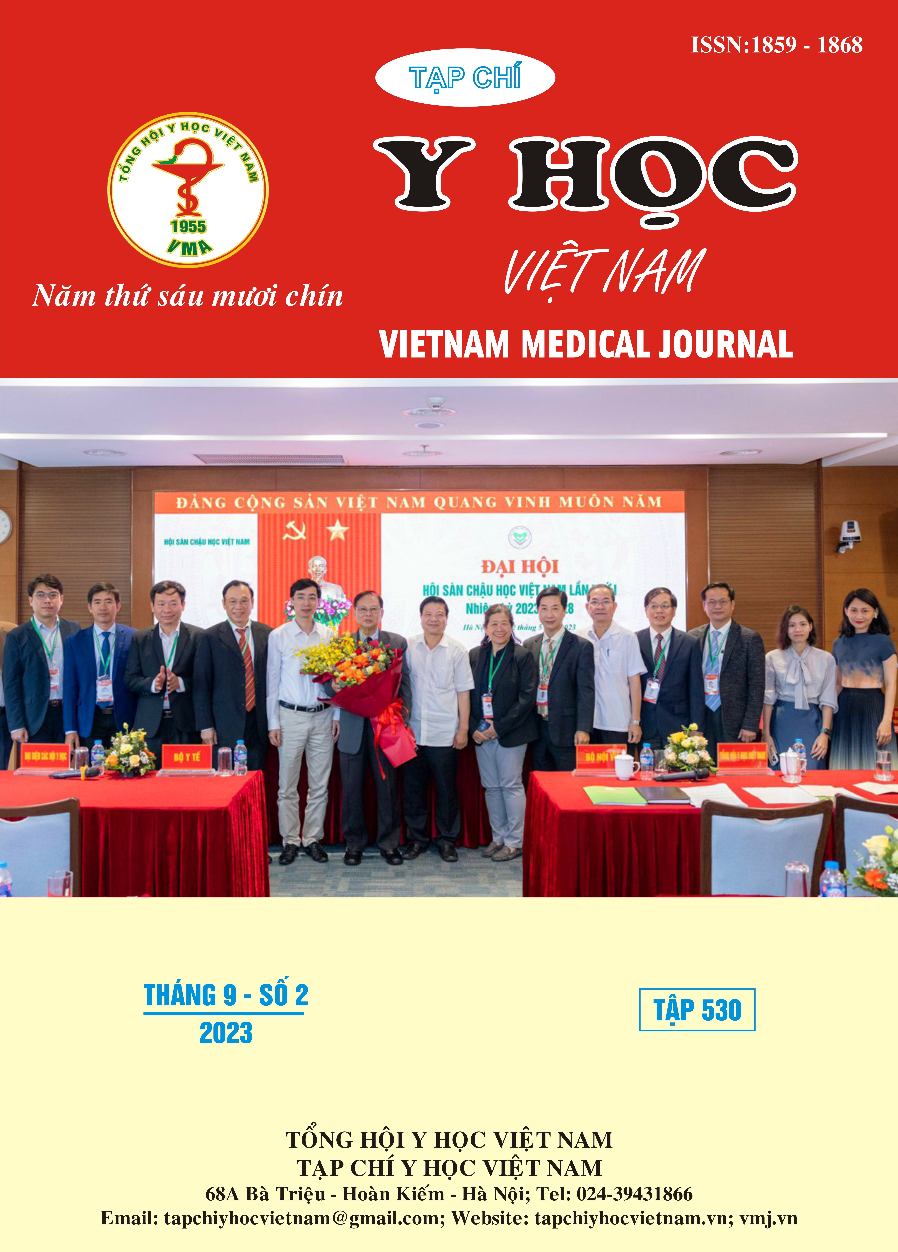SURGICAL TREATMENT OF ANTERIOR SKULL BASE TUMOR BY THE KEYHOLE EYEBROW APPROACH
Main Article Content
Abstract
Objective: To evaluate the results of microsurgery treatment of anterior craniofacial tumor by opening the skull cap and keyhole on the brow. Subjects and methods: retrospective, descriptive study on 76 patients operated at Neurosurgery Center of Viet Duc Hospital from October 2020 to June 2022. Results: In 76 patients who had surgery, there were 40 meningiomas, 21 pituitary adenoma and 15 craniopharyngioma. Female patients accounted for 72.4% of the group and the mean age was 46.5 (6-81 years old). The clinical manifestations before surgery were headache 77.6%, visual acuity loss 61.8%, hemianopia 27.6%, endocrine disorders 11.8%. The location of the tumors was the suprasellar 48.7%, frontobasal 22.4%, sellar fossa 21.1% and the third ventricle 6.6%. In which, solid tumors accounted for 63.2%, cysts 21.1% and mixed 13.2%. We removed the entire tumor in 82.9% based on intraoperative observation and postoperative magnetic resonance, removed most of the tumor (>90%) in 11.8% and 4 cases resected partially. Visual acuity improved after surgery was 78.7% (37/47 patients). Postoperative complications were hypopituitarism 14.5%, transient diabetes insipidus 21.1%, electrolyte disturbance 26.3%. The pituitary stalk was damaged in 4 patients 5.3%, 5 patients had damage to the olfactory nerve 6.6%. There were no serious complications or death. Six months after surgery, 80.3% of patients had good esthetic results (unknown scars), 17.1% of patients had acceptable results (clear scars) and 2 patients had bad scars. Conclusions: The supraarchal keyhole approach can be safely used for various lesions of the anterior fossa. Next, it is necessary to minimize damage to healthy tissues and have good aesthetic results. However, careful selection of patients is required and requires experienced surgeons.
Article Details
Keywords
anterior skull base tumor, keyhole eyebrow approach, suprasellar tumor
References
2. Albin MS, Bunegin L, Dujovny M, Bennett MH, Jannetta PJ, Wisotzkey HM. Brain retraction pressure during intracranial procedures. Surg Forum. 1975;26:499-500.
3. Reisch R, Perneczky A, Filippi R. Surgical technique of the supraorbital key-hole craniotomy. Surg Neurol. 2003;59(3):223-227. doi:10.1016/S0090-3019(02)01037-6
4. Maira G, Anile C. Pituitary Adenomas in Childhood and Adolescence. Can J Neurol Sci J Can Sci Neurol. 1990;17(1):83-87. doi:10.1017/ S0317167100030109
5. Marinov M, Undjian S, Wetzka P. An evaluation of the surgical treatment of intracranial arachnoid cysts in children. Childs Nerv Syst. 1989;5(3):177-183. doi:10.1007/BF00272123
6. Taniguchi M. Application of Supraorbital “Keyhole” Approach to the Treatment of Cerebral Aneurysm in the Anterior Circulation. Surg Cereb Stroke. 2010;38(1):18-23. doi:10.2335/scs.38.18
7. Đồng Văn Hệ và cộng sự. Phẫu thuật nang Rathke bằng phương pháp mở nắp sọ lỗ khóa. Tạp Chí Ung Thư. Published online 2019.
8. Dồng Văn Hệ và cộng sự. Phẫu thuật u màng não vùng hố yên bằng phẫu thuật mở nắp sọ lỗ khóa trên cung mày. Hội Nghị Phẫu Thuật Thần Kinh Việt Nam. Published online Hue 2008.


